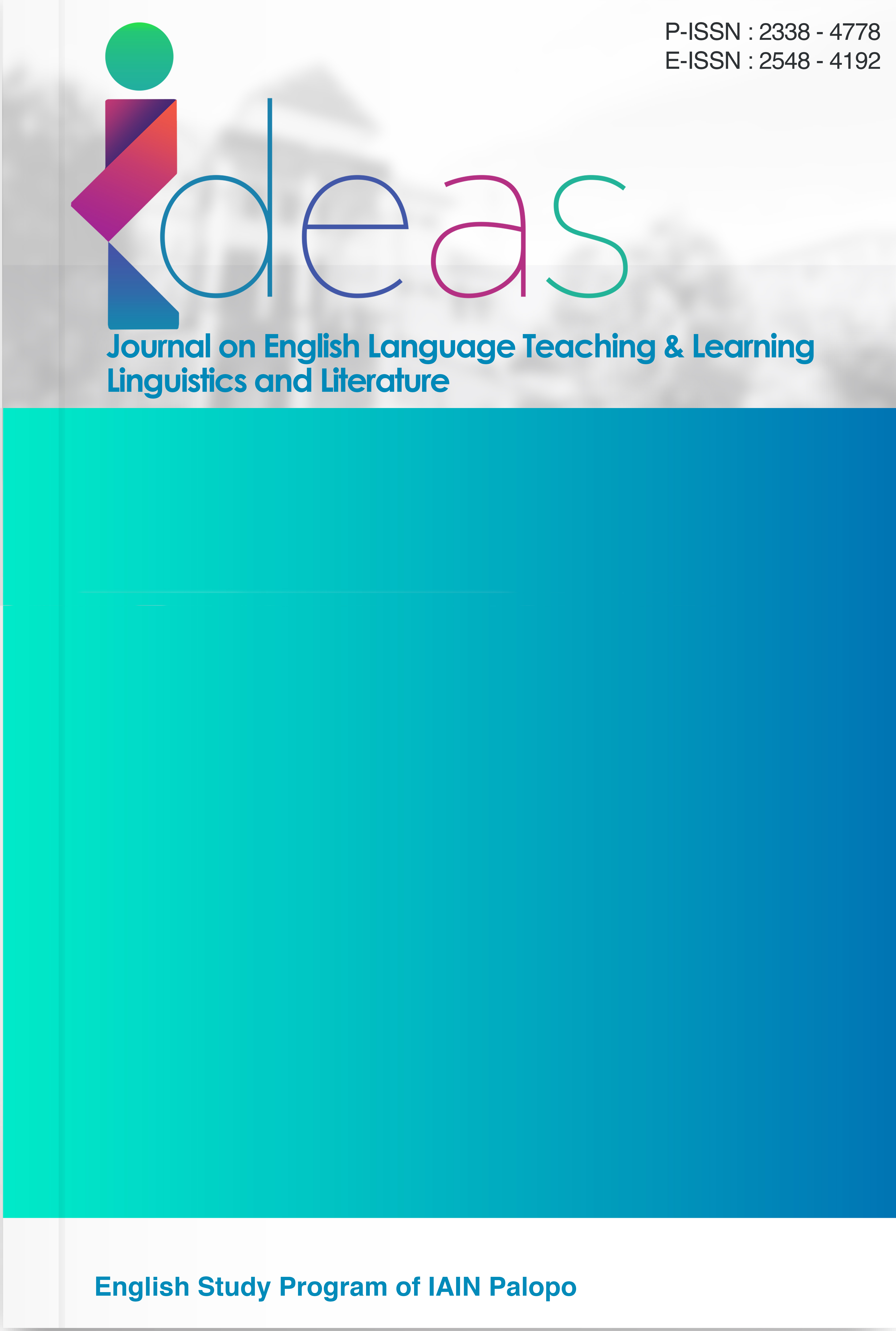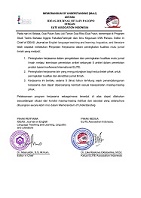Indonesia-English Code Mixing Found in Glad2glow’s Instagram Posts
DOI:
https://doi.org/10.24256/ideas.v13i2.7478Keywords:
Code Mixing, Glad2glow, instagram postsAbstract
Abstract
This research explores the presence of code mixing in Instagram captions posted by the Indonesian skincare brand Glad2Glow. The main objective is to identify the different types of code mixing used and understand the reasons behind their application in the brand’s marketing content. Utilizing Hoffman’s (1991) theory as the foundation for analysis, the study adopts a descriptive qualitative approach. The data were gathered through an observation method, specifically by taking notes on captions uploaded to Glad2Glow’s official Instagram account between January 4th and May 31st, 2025. The findings indicate that all three types of code mixing intra-sentential, intra-lexical, and phonological are present in the data. Among these, intra-sentential code mixing appears most frequently, while phonological mixing is the least common. The most common reason for using code mixing is to talk about particular topics, especially skincare related terms that are more familiar and appealing when expressed in English. Additionally, code mixing is used to express group identity and emphasize promotional messages in a more persuasive and relatable manner. These results suggest that code mixing functions as a strategic linguistic tool in digital branding to connect with bilingual audiences and enhance brand engagement.
References
Adams, J. N. (2003). Bilingualism and the Latin Language. UK: Cambridge University Press.
Hartono, I. (2022). Code-Mixing Types and Reasons among Instagram Users. Budapest International Research and Critics Institute (BIRCI) Journal, 5(1), 6636–6652.
Hoffman, C. (1991). An Introduction to Bilingualism. London: Longman.
Holmes, J. (2013). An Introduction to Sociolinguistics (4th ed.). London: Routledge.
Jufriadi, J., Asokawati, A., & Thayyib, M. (2022). The Error Analysis of Google Translate and Bing Translator in Translating Indonesian Folklore. FOSTER: Journal of English Language Teaching, 3(2), 69-79.
Juliastuti, J., Thayyib, M., & Haerazi, H. (2023). Intercultural Communicative Competence model using English literature: A case study at some Islamic universities in Indonesia. Register Journal, 16(1), 112-138.
Lyons, J. (1987). Language and linguistics: An introduction. Cambridge: Cambridge University Press.
Mesthrie, R., Swann, J., Deumert, A., & Leap, W. L. (2009). Introducing Sociolinguistics (2nd ed.). Edinburgh: Edinburgh University Press.
Muysken, P. (2000). Bilingual Speech: A Typology of Code-Mixing. Cambridge: Cambridge University Press.
Nasriandi, N., & Masruddin, M. (2021). The Use of British Parliamentary Debate Style in Teaching Speaking Skill. IDEAS: Journal on English Language Teaching and Learning, Linguistics and Literature, 9(1).
Rahmawati, C. T. (2022). Code-Mixing in Alternate Universe Story “Tjokorda Manggala” Written by @guratkasih on Twitter. Lingua Franca: Jurnal Bahasa dan Sastra, 16(1), 16–25.
Sari, D. P., & Hartanti, M. P. (2023). Code Mixing and Code Switching in Maudy Ayunda’s YouTube Channel. Retorika: Jurnal Ilmu Bahasa, 10(3), 510–524.
Thayyib, M., & Said, Y. R. (2024). Beyond K-Pop: A Discourse Analysis on ELT Research Article by Korean Authors. IDEAS: Journal on English Language Teaching & Learning, Linguistics & Literature, 12(2).
Thayyib, M., Wahibah, W., Ismayanti, D., & Zainuddin, A. H. A. (2025). Virtual Drama in Literature Education: Enhancing Language Learning Amid Challenges. International Journal of Asian Education, 6(1), 61-74.
Yanti, L., Thayyib, M., & Said, Y. R. (2024). Beyond K-Pop: A Discourse Analysis on ELT Research Article by Korean Authors. IDEAS: Journal on English Language Teaching and Learning, Linguistics and Literature, 12(2), 2636-2645.
Downloads
Published
Issue
Section
Citation Check
License
Copyright (c) 2025 Pande Dwi Vala Mantika, I komang sulatra

This work is licensed under a Creative Commons Attribution-ShareAlike 4.0 International License.
Authors retain copyright and grant the journal right of first publication with the work simultaneously licensed under an Attribution-ShareAlike 4.0 International (CC BY-SA 4.0) that allows others to share the work with an acknowledgement of the work's authorship and initial publication in this journal.
Authors are able to enter into separate, additional contractual arrangements for the non-exclusive distribution of the journal's published version of the work (e.g., post it to an institutional repository or publish it in a book), with an acknowledgement of its initial publication in this journal.
Authors are permitted and encouraged to post their work online (e.g., in institutional repositories or on their website) prior to and during the submission process, as it can lead to productive exchanges, as well as earlier and greater citation of published work (See the Effect of Open Access)




